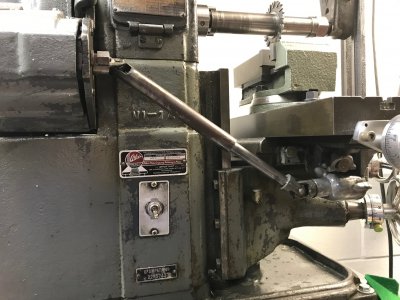- Joined
- Mar 22, 2014
- Messages
- 870
The table of my Atlas MFC horizontal mill speeds up and slows down in synchronization with rotation of the drive shaft. I suspect the cause is that the two universal joints are not properly phased. Does anyone know how they should be oriented? Or can anyone provide a photo of the joints on an Atlas mill with a table that advances at a constant speed?




